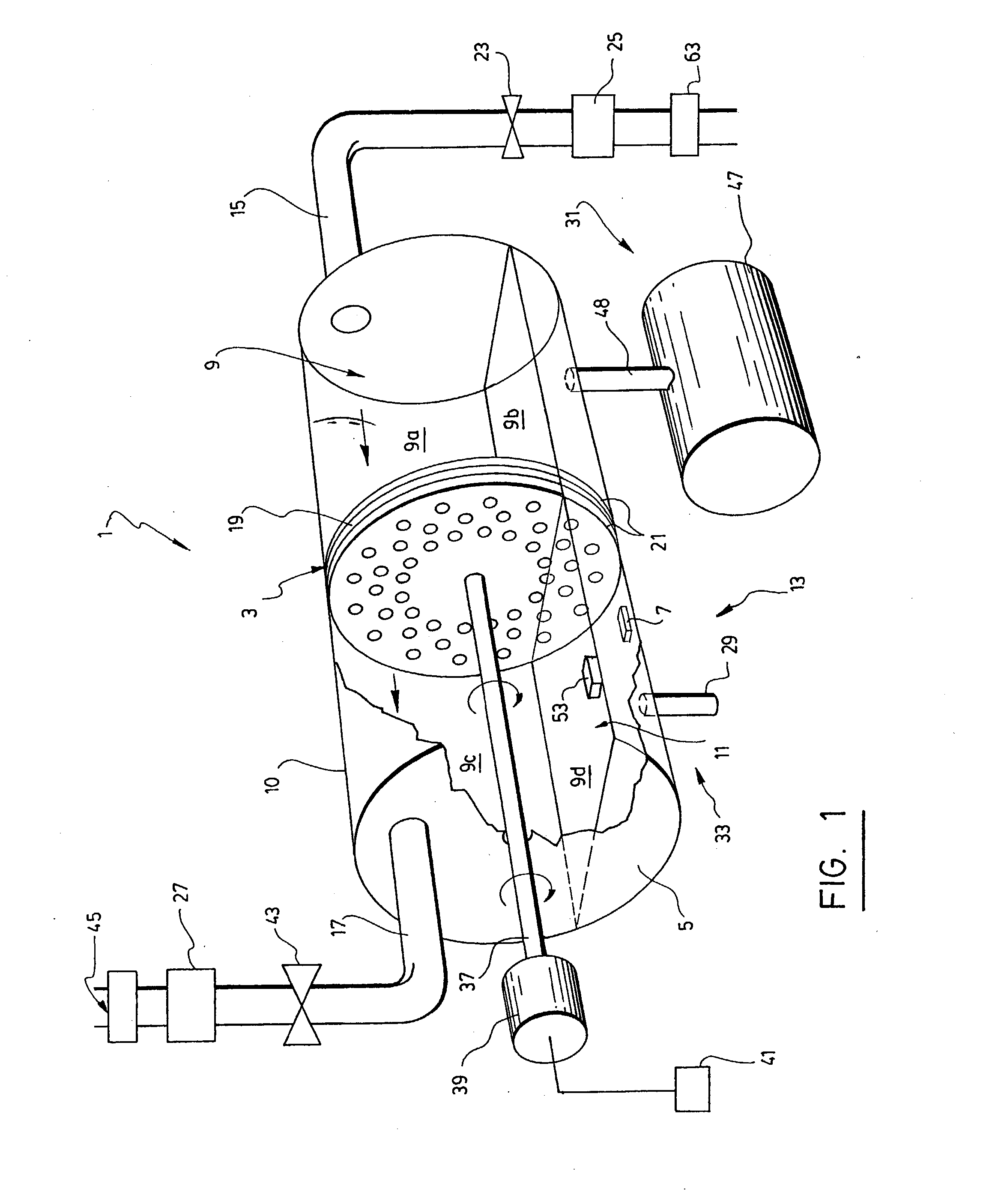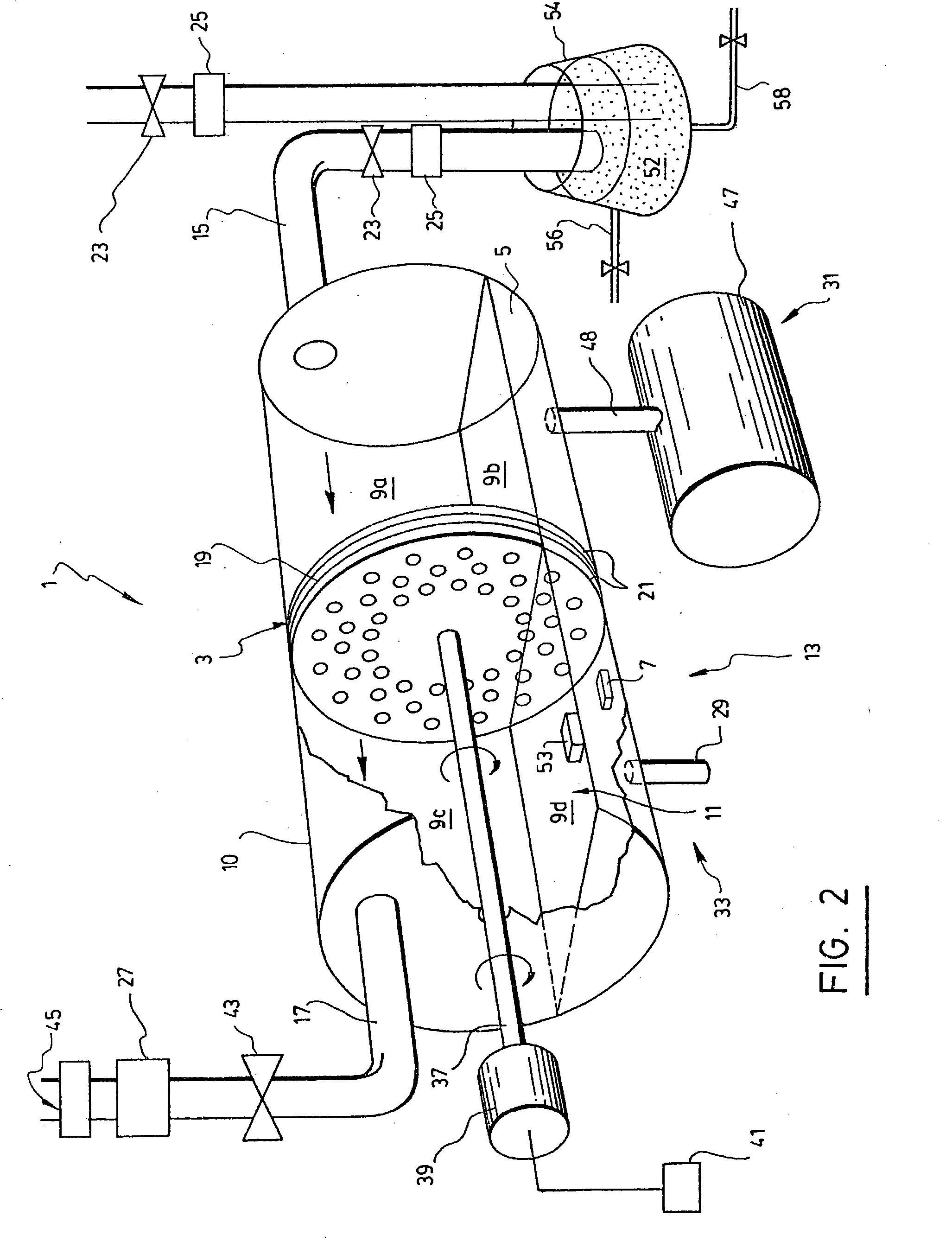Method, device and system for detecting the presence of microorganisms
a microorganism and detection method technology, applied in the field of methods, devices and systems for detecting the presence of microorganisms, can solve the problems of infectious microorganisms contaminating the air in hospitals, research labs, public buildings, etc., and achieve the effect of reducing ventilation
- Summary
- Abstract
- Description
- Claims
- Application Information
AI Technical Summary
Benefits of technology
Problems solved by technology
Method used
Image
Examples
example 1
[0084] Detection of Bacteria in the Air
[0085] In a first set of experiments, a device was built according to the model shown in FIGS. 1 and 2. A total number of 10.sup.4 E. coli K12 bacteria (in 100 .mu.L) was manually added to the filter which was next installed on the drive shaft between the two (2) filter holders. The phage concentration of the detection fluid was adjusted to 10.sup.5 pfu / mL. The filter device was next mechanically rotated (6 rpm). After a 24 hour period of incubation at room temperature (23.degree. C..+-.2.degree. C.), the detection fluid was collected from the device and assayed for the presence of phages using a standard plaque assay procedure (Balows, A, 1991, Manual of Clinical Microbiology, 5.sup.th Edition; Balows, A, Hausler W J, et al, eds, American Society for Microbiology, pub; 1217 pages). The results showed a thousand-fold increase in phage concentration in the sample (see Table 1). These results show that the "rolling circle" principle can be used f...
example 2
[0086] Stability of Detection
[0087] In another set of experiments, the same conditions as those described in Example 1 were reproduced, except that the period of incubation was extended to 12 days. The volume of detection fluid was also measured at 0 and 12 days. The results showed a 10% decrease of volume (from 36 to 32.5 mL). These results demonstrate that the device illustrated in FIG. 1 prevents the evaporation of the reaction medium and can be used for the continuous detection of bacteria using specific phages.
example 3
[0088] Detection of Bacteria in a Gaseous Environment
[0089] In another set of experiments, the device described in FIG. 1 was inserted in a plastic recipient equipped with a nebulizer. This nebulizer allows the addition of bacteria in the air of the recipient. An amount of 10.sup.4 E. coli K12 bacteria was "nebulized" into the chamber. The filter device was next mechanically rotated (6 rpm; 4 days, 23.degree. C..+-.2.degree. C.). Samples were collected 3 and 4 days after the addition of bacteria. The results showed a million-fold increase in phage concentration of the sample (see Table 2). These results demonstrate that the "rolling circle" or "spinning wheel" principle can be used for the capture of bacteria in the air and further detection using specific phages.
2TABLE 2 Detection of E. coli K12 in the air by phage K12 Time (days) [Phage] (pfu / mL; -log.sub.10) 0 4 3 9.8 4 9.3
PUM
| Property | Measurement | Unit |
|---|---|---|
| volume | aaaaa | aaaaa |
| temperature | aaaaa | aaaaa |
| temperature | aaaaa | aaaaa |
Abstract
Description
Claims
Application Information
 Login to View More
Login to View More - R&D
- Intellectual Property
- Life Sciences
- Materials
- Tech Scout
- Unparalleled Data Quality
- Higher Quality Content
- 60% Fewer Hallucinations
Browse by: Latest US Patents, China's latest patents, Technical Efficacy Thesaurus, Application Domain, Technology Topic, Popular Technical Reports.
© 2025 PatSnap. All rights reserved.Legal|Privacy policy|Modern Slavery Act Transparency Statement|Sitemap|About US| Contact US: help@patsnap.com



